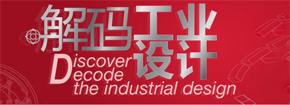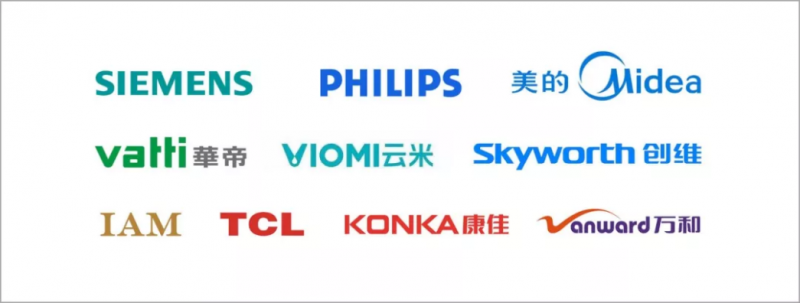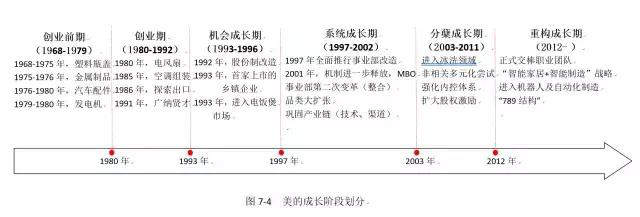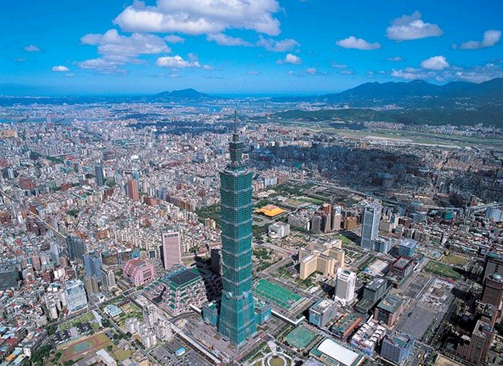成就商业成功之路:用户体验制度化
Introduction
介绍
Over the past decade both the nature of customer expectations and the software development process changed. Many companies have identified the need to better serve their customers, especially end users, because the decision to buy business software is often no longer made by the CIO, but by the departments that use the software themselves. User Experience is becoming more and more important to successfully sell a product.
过去的十年里,客户体验的性质和软件开发流程都发生了变化。很多企业发现他们需要更好的服务客户,尤其是最终用户,原因在于购买软件的决定者不再是CIO,而是使用软件的部门本身。用户体验对于产品的成功销售变得越发重要。
At the same time the software development process in many companies has not changed. The engineering department continues to decide which features and functions are implemented without real end user involvement.
同时,在很多企业中,软件开发的流程没有改变。在没有接触真正最终用户的情况下,一直是工程部门决定开发实现哪些功能。
Some years ago SAP decided to build a game changing business solution. The goal was to extend the market penetration in the small and medium enterprises (SME) market significantly. To develop a disruptive and game changing solution, SAP completely changed the way how to build applications from a technological, process, and from an organizational point of view. User Experience was made a high priority right from the beginning, because it was seen as main differentiator and competitive advantage in the future.
几年前,SAP决定建立一个突破性的商业解决方案,目标是显著拓展中小型企业市场,开发一个颠覆性的,全新的解决方案。从技术上,流程上,组织架构上,SAP完全改变了创建应用程序的方式。从项目开始,用户体验就占据的高优先级,因为她是未来区别于其他产品的主要指标,也是竞争力之所在。
To develop a new breakthrough business solution, we had to create a new technology platform that enabled us to develop open and flexible business applications. We developed a pure service-oriented architecture (SOA) and implemented UI pattern into the development tools.
开发一个全新突破性的商业解决方案,我们不得不创建一个新的技术平台,在这个平台上,我们可以开发开放灵活的商业应用程序。我们开发了SOA(纯面向服务的体系结构),同时在开发工具中嵌入UI pattern。
We also radically changed the development process. Superior User Experience is a key goal and to achieve this we defined an outside-in driven, iterative development process. User-centered design was mandatory for the complete organization. To measure the achievement of our defined user experience goals, we defined a user experience key performance indicator (KPI) and made the achievement with each release visible in the organization.
我们还从根本上改变了开发流程。出众的用户体验成为关键目标,为此目标,我们定义了一个由外向内驱动,反复迭代的开发流程。对于整个组织,以用户为中心的设计(UCD)是必须的。为了衡量用户体验目标实现的程度,我们定义了用户体验关键绩效指标,同时每次版本发布都对组织内部公开这些绩效指标的完成情况。
In addition to the new technology and the new development process, we setup a completely new organization that grew very fast into a very large and global organization. This was done, because the technology as well as the business applications had to be build from scratch. We decided to leverage the talented people in our global organization. People from different locations and cultures had to work together as one team.
除了新的技术和开发流程之外,因为技术和商务应用程序都要从头做起,我们建立了一个全新的组织,并迅速成长为一个全球性组织。我们重视组织中的优秀人才,不同地域,不同文化下的员工必须在一个团队下工作。
The new organizational setup was also different than in other SAP organizations. We had a Solution Management organization and a Development organization. Solution Management – other companies call it Product Management – was responsible for the definition of the market requirements and the detailed product definition. UX Designers were responsible for the interaction design and supported the execution of User Research activities like site visits or UI Validations. Development was responsible for the implementation of the solution.
The challenge was to apply a scalable user-centered design process in this large and global organization. We had to learn how to collaborate cross locations within small teams. Some teams had to deal with more than 3 locations and had to deal with asynchronous communication, different time zones and cultural differences. We also learned, that “English is not English” and had to learn how to conduct virtual design sessions.
这个新的组织架构和其他SAP的组织是不同的,我们有一个解决方案管理部门和一个开发部门。解决方案管理在其他企业中称为产品管理,他们负责市场需求和详细产品定义。用户体验设计师负责交互设计,支持用户研究的执行,如客户访谈或者用户测试。开发部门负责解决方案的实现。在如此大的一个全球性组织架构下,比较难的是如何应用一个可扩展的设计流程。我们必须适应如何与众多跨区域的小团队协作。 有些团队不得不与3个以上区域的同事打交道,不同的时区导致不同步的沟通,还要面对不同的文化差异。我们懂得了“此英语非彼英语”,以及必须学会如何进行虚拟的(非面对面的)设计活动。
The biggest challenge for us was that the technology was not available at the time we started designing the solution. We had to start with understanding the new market and the user requirements when the technology architecture was just paper work. We could not wait for one or two years until the technology was available. The time to get the product to the market would have been too long.
对我们来说最大的挑战莫过于,在我们开始设计的时候,技术还没有成型。在技术架构还在雏形之时,我们必须从了解新市场和用户需求开始,我们无法等到一两年后技术成熟后才开始。如果那样,产品的上市就太晚了。
.jpg)
With the fast growing organization, it was a big challenge to continuously explain the value of User Experience to non-UX people (developers and solution managers). Developers are usually happy, if they can focus on the implementation of features and functions. Solution managers often have a market research background, but are not familiar with User Research. Usability professionals understand the value of UX very well, but they are often seen as artists by non-UX people. We had to find ways to change this perception and we had to make the value of UX visible to our organization. Everybody in the organization had to understand the value of user-centered design and embrace it. The article will give you some examples how we step-by-step achieved to institutionalize user experience within the organization.
随着组织的快速增长,持续不断地给非用户体验同事(程序员和产品经理)解释用户体验的重要性成为了一个挑战。程序员乐于集中精力开发产品功能,产品经理通常有市场研究的背景,但不熟悉用户研究,可用性专家理解用户体验的价值,但常常被非用户体验的人看成艺术家。我们需要改变大家认知,在我们的组织里展现用户体验的价值。组织内每个人都要理解以用户为中心的设计重要性并接受它。这片文章将会给你一些实例,通过这些实例,你会了解我们是如何一步一步的在组织内将用户体验制度化。
It was an extraordinary journey for me personally. There were many ups and downs, but we also had a lot of fun, especially within User Experience team which contained young, dynamic and creative people. In this article, I would like to share my journey of the last years to get more impact with User Experience in the development organization and the product itself.
对我个人而言,这是一个不同寻常的旅程,其中有很多起伏,但我们也享受到了很多乐趣,尤其在我们这个年轻的、精力充沛的、充满创造性的用户体验团队里。在这篇文章中,就如何在开发组织中,在产品中,增加用户体验的影响,我会分享这几年的体验。
It was a challenging time, because to my knowledge, no other software company did something on this scale before. We could not learn from other companies how they mastered the challenges. We had to learn on our own and sometimes had to try out what works and what does not. I learned a lot about
那确实是很有挑战性的一段时间,因为据我所知,没有一个具有类似规模的软件公司曾经做过这些,我们不能向别的企业学习他们如何应对这些挑战,我们不得不自己边做边学,有时必须去试才知道哪些可行,哪些不可行。现分享如下:
· how to setup and execute a user-centered design process in a global organization,
· 如何在一个全球性组织中建立和执行一个以用户为中心的设计流程
· how to influence the organization and people to ride the user-centered design wave and
· 如何去影响组织和组织中的人,使其驾驭以用户为中心的设计潮流,以及
· how to achieve impact on the UI technology to focus on User Experience requirements.
· 如何影响用户界面开发技术,使其着重于用户体验需求。
Many of the recommended UX practices we used in this project might work for you and your company. Some are more specific for large companies with more complex processes and globally distributed organizations. Take some of the recommendations and try them out in your company. You will see what will work and what has to be adapted to your circumstances.
这里推荐的很多实践方法对你和你的企业也许是适用的,有些实践方法则只适合拥有复杂流程和全球性组织的大型企业,你可以接受一些建议,在你的企业里做尝试,随后你会发现哪些是可行的,哪些是需要按照你的环境做改变的。
上一条新闻:设计人机交互界面 年赚上百万
下一条新闻:首届中国交互设计体验日回顾
更多关于成功之路 用户体验制度化 的新闻
- “中国人机交互杰出学者系列讲座...2009-11-25
- 交互创意大赛走进南京艺术学院2011-05-30
- 交叉螺旋式设计解决粤港大桥左右...2010-08-16
- 中国交互设计体验日志愿者动员会...2011-09-14
- 移动终端中的视觉引导2011-07-07
最新文章
- 设计师如何快速转型VR设计?2016-05-23
- 2013中国交互设计体验周报名正式开启2013-04-07
- 用设计禅悟生活,用交互深触产品...2011-09-22
- 中国交互设计体验日探营(一)2011-09-15
- 走进创新设计大本营-创新工场参...2011-09-15










